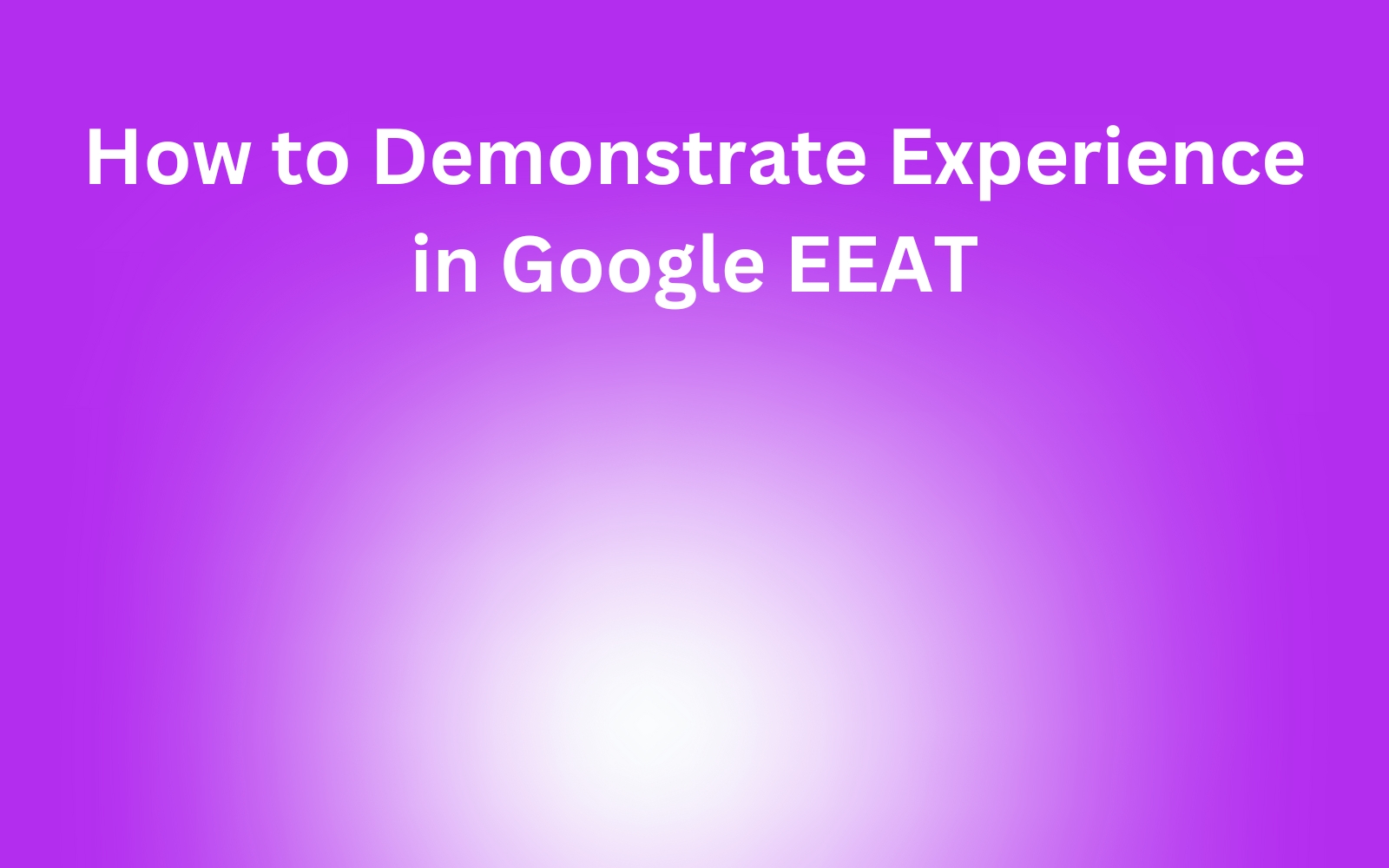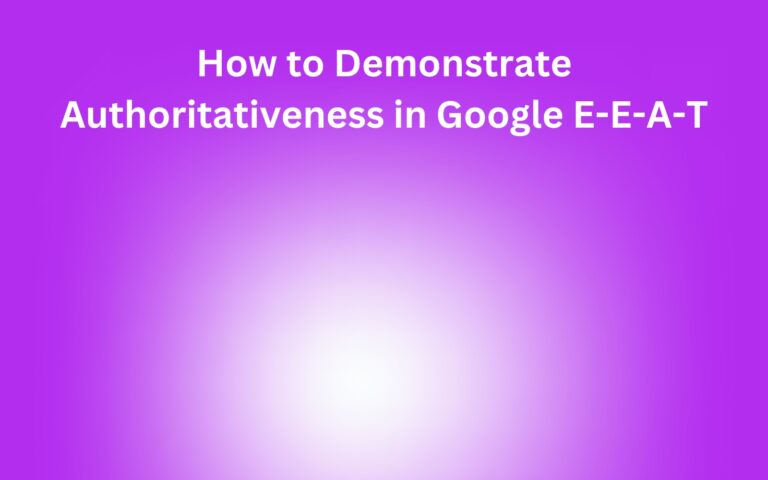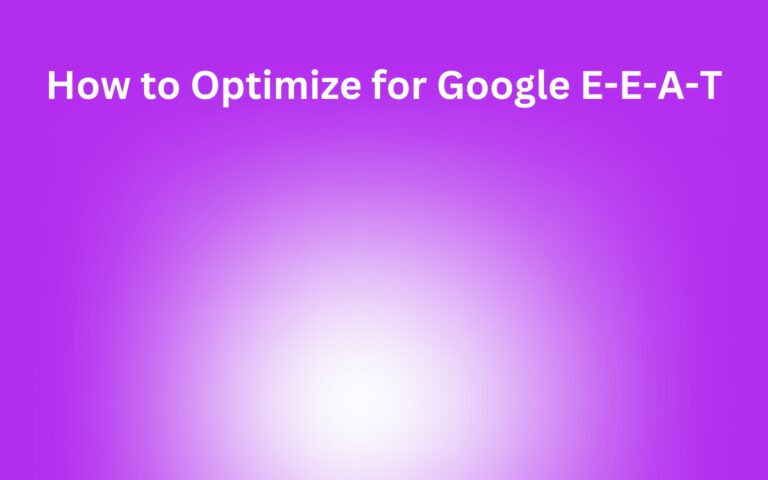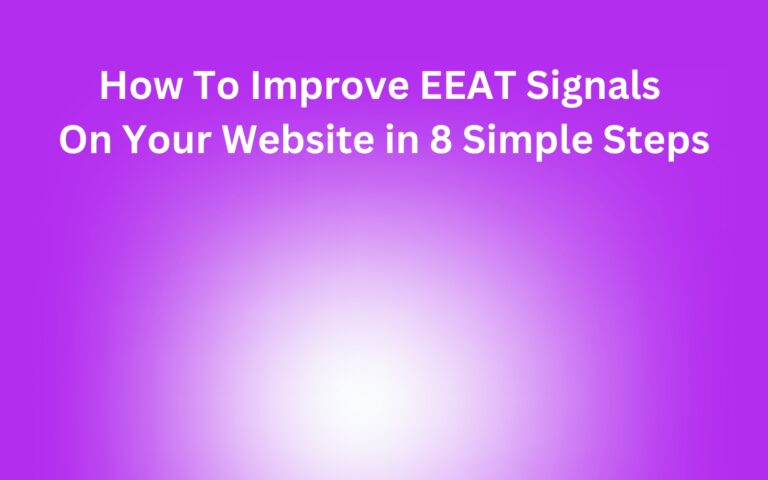How to Demonstrate Experience in Google EEAT: 4 Proven Strategies
If you’re trying to boost your website traffic, improve your Google rankings, and establish yourself as an industry leader, focusing on your Google EEAT signals is the best strategy.
People want high-quality content from experienced writers, and Google puts a lot of effort into finding the best websites for the job.
This guide will show you how to demonstrate experience in Google EEAT and the best strategies for boosting your experience in EEAT for better rankings.
What is Experience in Google EEAT?
Experience in Google EEAT refers to brand’s or author’s knowledge and first-hand experience on a given topic. It was added to Google EAT in December 2022.
Google added experience to the acronym because people want information from reliable sources, which helps crack down on misinformation. Pages related to Your Money or Your Life (YMYL) topics are most impacted by Experience, so it’s crucial to understand how to showcase this attribute on your website.
What is the difference between experience and expertise in Google EEAT?
Experience and expertise are often used interchangeably, but they mean different things within Google EEAT.
According to Google, experience is the extent to which the content creator has first-hand or life experience on the topic. For example, a product review from someone who has personally used the product or a travel guide from someone who has been to the destination.
On the other hand, expertise refers to the level of skill or knowledge someone has in a particular field or subject. This is a combination of education, training, and qualifications. For example, a home electrical rewiring guide from an electrician or a financial report from a banker.
There is some overlap between the two, but it’s essential to show clear signals for both expertise and experience to get the best EEAT score.
How to Demonstrate Experience in Google EEAT
So, how do you optimize content for experience in Google EEAT? Google doesn’t publish its exact criteria, but four key strategies work.
Show User Testimonials, Social Proof, and Evidence of Real-Life Experience
The more real-life experience you can add to your website, the better. This includes writing product reviews for products you’ve personally used, sharing testimonials from people with first-hand experience, and adding social proof to your content.
Remember, the experience doesn’t have to be from the owner of the website – you can showcase experience by including content from others with first-hand experience and crediting them as the author.
Feature Insights From Industry Experts
Industry experts already have high levels of experience and great Google EEAT rankings, so featuring them on your website is a great way to benefit from that experience.
Try to get exclusive quotes or insights from industry leaders on specific topics – some will be happy to weigh in on interesting and trending topics.
You can also source new, developing information from industry leaders and talk about it on your website – just make sure anyone referenced is happy to appear on your site.
Prove your experience with an “As Featured On” section
An underrated yet effective way of showcasing both experience and expertise is to have an “as featured on” section on your homepage with a list of the publications you’ve written for.
If you don’t have any features yet, we can help. Linkifi can get you high-quality features on industry-leading publications, from Forbes and Huff Post to Entrepreneur and Nasdaq.
We’ll find the best high-authority publications in your industry and land you features that get quality backlinks back to your site. Not only will this boost your domain authority, but it will also give you a great “featured” section to add to your website.
Showcase Your Team’s Bios and Credentials – and Back it With Proof
If you’ve got experienced team members, showcase their credentials and back it up with proof. This might be qualifications, certifications, industry experience, or anything that shows the content creators contributing to your website are experienced in their niches.
Build Your About Us Page With Your Company Story, Mission, and Values
Your About Us page is prime real estate and one of your website’s most important pages. It should include important information about your team members, company store, mission, and values.
New visitors are more likely to visit your About Page, and 31% of people agree a detailed About Us page is an essential part of any website.
Because you can share so many details showcasing your experience on this page, it becomes a hub of information that can supercharge your experience in EEAT. Here are a few things to include on your About Us page:
- Detailed bios of team members, including credentials, qualifications, and education.
- Descriptions of the products or services you provide.
- Testimonials from previous clients.
- A brief company history.
- Your values and mission statement.
It can be tough to create an optimized, highly valuable About Us page, which is why our team at Linkifi will take care of it for you. We create the best About Us pages that showcase experience and expertise to help our clients easily boost their EEAT signals.
Use Structured Data on Your Key Pages
Structured data helps Google comprehend the content better, helping communicate details about your business, products and services, and team.
Embedded tags of code (AKA “markup”) tell Google what to display on SERPs and what the information on your website represents. It also helps social media platforms turn your website content into preview snippets more accurately.
For a deeper dive into the vocabulary used to structure data, Schema.org is a great resource. It is the accepted universal vocabulary standard for structured data.
How Does Google Evaluate Website and Content for Experience?
The Google Quality Rater Guidelines (AKA the Quality Evaluator Guidelines) provide detailed instructions on how to evaluate website quality using EEAT signals. Quality raters around the world use this 160-page PDF to assess the quality of web pages and assign scores based on their results.
The guidelines are updated twice a year and are filled with tips, examples, and definitions to help raters accurately assign a quality score based on “needs met”.
There are hundreds of examples in the guidelines covering what Google considers a high, medium, and low-quality web page. Still, in general, your website needs to meet the following criteria to be considered high-quality:
- A high level of EEAT
- High-quality main content
- User-friendly navigation
- The great reputation (i.e., high domain authority)
- Transparency about the authors and source of the content
Need to Bulk Up Your EEAT? Let Linkifi Help
It can seem daunting to figure out how to demonstrate experience in Google EEAT, but by following the strategies in this guide, you’ll easily show experience through quality content, highlighted credentials, and an effective About Us page.
But if you want to boost your EEAT signals quickly with a tried-and-tested strategy for success, Linkifi can help. We secure industry-leading digital PR opportunities for our clients that quickly and effectively boost expertise and experience in EEAT.
Get in touch today to find out exactly how our team can improve your website’s E-E-A-T and help you become an industry leader.







